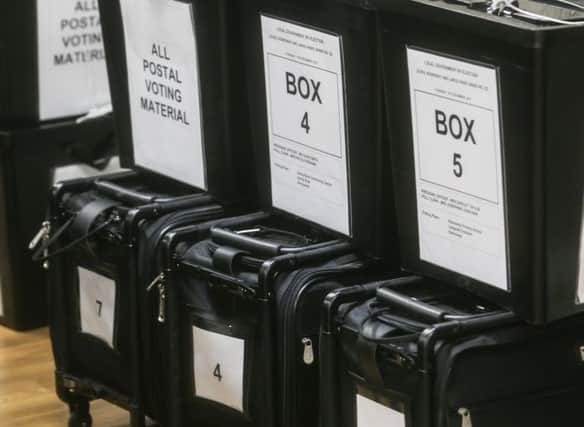What is Single Transferable Vote? Local Council voting method explained


Pity the Scottish electorate – since April of 2011 they have voted in two Holyrood elections, two referendums, a general election and a local election. And there’s even more to come.
Tomorrow voters traipse to the polls once again to cast their vote (or votes) for the candidates they want to see taking decisions at their local council.
Advertisement
Hide AdAdvertisement
Hide AdThe Scottish local council elections see us move away from the traditional system of putting an ‘X’ next to our preferred candidate.
We operate a Single Transferable Vote (STV – not to be confused with the TV channel) system, because the smaller wards that used to make up local authorities have been replaced by large, multi-member wards.
Why STV?
STV was brought in to ensure that voters were better represented, as it is a form of proportional representation.
Previously in Scotland, single parties tended to dominate town halls as their vote was often concentrated in one area, while their opponents’ was more widely spread.
Similarly to the system in place at the Scottish Parliament, the difficulty in achieving an overall majority on councils (in theory) leads to coalition building and different parties working together.
The lack of ‘wasted’ votes was also seen as a way to try and encourage an increase in turnout, which is usually substantially lower for local elections.
Ranking
Instead of an ‘X’, voters are asked to rank the candidates on their ballot paper in descending order of preference.
A common misconception is that you need to rank until there are no more candidates remaining, but in fact you can vote for as many or as few as you like.
Advertisement
Hide AdAdvertisement
Hide AdIf, for example, you only want to vote for one party’s candidates, and they have two candidates, you can rank them “1” and “2” and leave the other boxes blank.
It is important to remember that if you mark any boxes with an X, as you would do for any other election, your vote will not be counted.
Counting
Counting votes in elections that use STV is naturally a lot more complicated than counting in elections that use First Past the Post.
There is a quota for a candidate in a multi-member ward to be elected, which is worked out by dividing the number of ballots by the number of councillors to be elected.
For counting, the piles are sorted by first preference votes, ie the number of people who ranked a certain candidate number 1.
If a candidate receives more first preferences than the quota in the first round of voting, then they are automatically elected.
Surplus and knock-outs
The elected candidates’ “surplus” votes, that is the votes over and above the quota which got them elected, are then redistributed amongst the remaining candidates.
If there are no more candidates elected immediately at this stage, then the candidate with the lowest votes is excluded.
Advertisement
Hide AdAdvertisement
Hide AdTheir votes (decided by second or third preference) are then transferred among their fellow candidates, with the exception of those that showed no further preferences or expressed a preference for the candidate already elected at the first stage.
This goes on, eliminating the bottom candidate, until the transfers ensure that the quota has been met by enough candidates.
